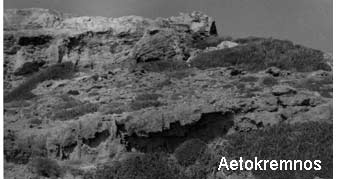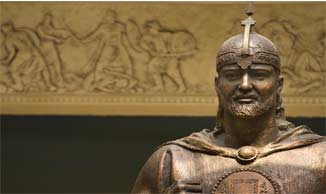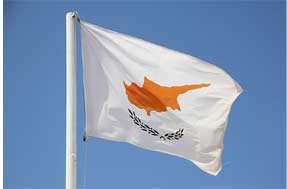
The earliest confirmed site of human activity on Cyprus is Aetokremnos, situated on the south coast, indicating that hunter-gatherers were active on the island from around 10,000 BC,Around 8,800 BCE The first Cyprus peoples introduced sheep, goats, dogs, pigs, cattle, foxes and deer to the island. Also during this period the Neolithic village of Khirokitia (a UNESCO World Heritage Site) was founded. Water wells discovered by archaeologists in western Cyprus dating back to are believed to be among the oldest in the world, dated at 9,000 to 10,500 years old. Remains of an 8-month-old cat were discovered buried with a human body at a site in Cyprus dating back to 7,500 BCE. The grave is estimated to be 9,500 years old, thus predating ancient Egyptian civilisation and pushing back the earliest known feline-human association.

In the year 5,800 BCE there is evidence of a large earthquake hitting the island of Cyprus. Scientists who have studied ancient structures on the island agree that significant seismic activity can be the only possible explanation for the type of movement discovered. Around 5,500 BCE there is evidence of the first signs of metalwork on the island. By 1,550 BCE War with the Hyksos created a refugee crisis. The Hyksos ruled Egypt from 1650 BCE - 1550 BCE. They were were then expelled from Egypt by Ahmose I, who founded the Eighteenth Dynasty of Egypt. By the year 1400 BC Mycenaean Greek traders started visiting Cyprus. and the Hellenization of Cyprus started.The first known settlers in Cyprus were the Mycenaean Greeks. They arrived in two waves during the 2nd millennium BC. Due to it being a strategic location in the Middle East, Cyprus was subsequently occupied by many major powers, including the empires of the Egyptians, Assyrians, and Persians, from whom the island was eventually seized in 333 BC by Alexander the Great.

In the year 331 BC Nicocreon, king of Salamis became ruler in Cyprus. Nicocreon had submitted to Alexander without opposition, as did all the Cypriot kings, and went on to impress the conqueror with his theatrical displays. In 58 BC Cyprus became a Roman province. A year later it was placed under the rule of Cleopatra by Julius Caesar.In the year 30 BC Cyprus reverted to complete Roman rule. The first signs of Christianity emerged in Cyprus in the year 45 BC. It was introduced to the island by the Apostle Paul and St Barnabas who converted the Roman governor of the time, Sergius Paulus. In the year 115 Cyprus endured the Kitos War: A messianic Jewish revolt began which resulted in the massacre of 240,000 Cypriots. Trajan intervened to restore the peace and expelled the Jews from Cyprus. The revolt ended in the year

By the year 395 the western Roman empire had fallen and Cyprus fell under the rule of its Eastern provinces known as the Byzantine Empire. Cyprus remained under their rule up until 1185 apart from an interruption when Arabs under the rule of Muawiya who invaded and occupied Cyprus in 649. Arab rule was a feature in Cyprus up to the year 945 when it was returned fully to the rule of the Byzantine Empire. In the year 1185 Cyprus became an independent Empire under Isaak Comnenus.

For Nissi Golen Sands and Nissi 3, contact Antony Ross
For Skaros, please contact George Atzio
+44 7737 540 170. WhatsApp.
+357 99 472 419 WhatsApp
